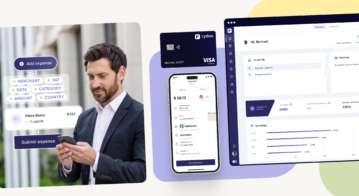Bringing the Cloud Revolution to the Telecoms Contact Centre with RingCentral
Like most areas of business today, larger telecoms enterprises are facing challenges from disruptive startups and new competitors, often those with low overheads.
New players’ digital-first, or digital-only business models mean they don’t carry many traditional costs, like operating brick-and-mortar stores. The lighter cost-load means that despite not having the benefits of economies of scale and heavyweight marketing capabilities, the newcomers can match prices and terms.
In fact, in some cases, even better than the older, more established competition.
If price point is no longer a differentiating factor, where companies can distinguish themselves is by the levels of customer care and support they offer. Today’s digitally-savvy telecoms user is all about getting the best possible value from their provider, but also comes to the vendor with very high expectations for a personalised customer experience.
Creating the best standard of customer experience depends on two significant factors: the first is time — that’s time to response, and time to resolution (clearly, the shorter, the better). The second is the tendency for different communication channels to be regarded by customers as homogeneous. Switching from text to DM to phone call has become routine and everyday to today’s consumers & businesses, and lack of capability to deal with this causes significant negative consequences in resolution times (and therefore on overall customer experience quality).
Call centres in customer care and pre-sales need new generations of communications platforms that help create new, agile working practices that lower resolution times, and enable authentic omni-channel communications. But such platforms cannot disregard previous investments in this space. The open APIs and inherent capabilities of omni-channel cloud-based solutions are where telecoms providers are finding their answers. Here’s why:
It’s about the staff
Studies show that the turnover of staff in contact centres is between 30 to 45 per cent. 75 per cent of employees report being unhappy at work when the tools they use to communicate hinder productivity.
With a single cloud platform that unifies all communication channels, and therefore a single interface for contact centre team, staff (and by proxy, customer) happiness levels are boosted. Instead of switching from app to app, from interface to interface, staff get a single point of reference for all interactions.
That’s an effective way to save time — the bottom line gets a boost — but at a deeper level, saving time means that agents can concentrate on tasks that will help change the call centre from a cost-creating to a profit-making function. Cross-selling and upselling, with incentivisation for staff: the possibilities increase financially, sure, but also lower those staff turnover figures, with agents challenged in new and exciting ways that develop their careers.
At a practical level, the single interface allows simultaneous issue resolutions — especially effective in situations where comms are asynchronous (like texts, social media DMs, and online chats). In practical terms, that means agents can address several messages at once, and although just getting to customers faster should undoubtedly be the “Route One” for any customer care facility that wants to improve, it’s one that often seems to go ignored.

Source: RingCentral
It’s about the training
Onboarding staff where there’s a high turnover of recruits is a significant cost burden to any telecoms vendor or service provider. That burden is literally multiplied when multiple platforms need to be addressed as each package needs individualised training sessions.
With a powerful, up-to-the-minute omni-channel solution, agents only have to learn one interface, but furthermore, that one interface should be attractive and usable from the agent’s point of view. Attractiveness & usability might seem like afterthoughts in the software developer’s processes, but get the user interface wrong, and companies are creating further challenges for themselves. People who don’t like their working environment (read: the interface in which they work, in this context) don’t work very hard, and are keen to move elsewhere.
By pulling together every communication channel open to the customer, and integrating openly with other systems (like the company CRM), agents know that the facts they need are available across every interaction. Staff are empowered with data — the information they need to get their jobs done.
It’s about the specialisation
Improving productivity means moving away from teams being organised along the lines of channel-based silos. Instead of having “the call team,” or “the social media department,” groups of skilled employees can be given in-coming contacts according to their particular skillsets.
Technical teams can address issues that have been intelligently forwarded to them by the platform for speedy resolution; billing inquiries go to the right people; customers threatening churn can be presented with killer deals and special offers. Here, technology helps call centre and customer care function operators to hit two targets at once. Staff have the time to better develop their careers, and can address queries that are resolved faster by the experts: staff love to help, and customers love the speedy issue resolution!
The beauty of an omni-channel platform is that smart routing can take place automatically: identifying key queries is done on the fly, and the customer ends up in touch with the person they need, not passed from operator to operator, each of which asks for history and background every time.
Conclusion
Optimising processes in the contact centre is a win-win situation. The customer benefits from a speedy, personalised experience that’s specific to his or her requirements, when it’s needed, via channels of their choice.
The call centre or customer care facility gets happier, more productive staff that are significantly less likely to want to move on.
The architecture of openness that’s inherent in the best platforms (leader amongst which we believe is currently the RingCentral offering) means plugging into and utilising existing technology investments like customer engagement platforms, workforce management systems, and business intelligence algorithms. And by the same methods, new tech like AI and big data processing (think of those as ChatBots v.2.0) can come online and enhance the employee’s and the customer’s experiences further.
For enterprise-grade reliability at scale that gives the best one-on-one customer (and employee) experiences, we urge considering RingCentral. To learn more, the best way forward is to get in line for a free demo.









